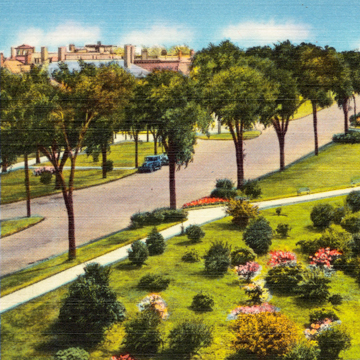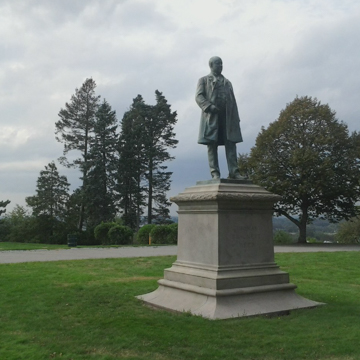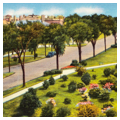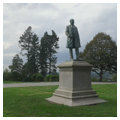As the City of Portland was building the Eastern Promenade in 1837, it began acquiring property on the city’s western bluff, principally Bramhall Hill, for a similar roadway, a scenic thoroughfare lined with shade trees and a planted right of way. Beginning in 1878, engineer William A. Goodwin guided the transformation of the Western Promenade into a more formal public park, grading West Street from the Promenade to Chadwick Street and installing 10-foot wide sidewalks, a 10-foot wide esplanade, and 40-foot street, with edge stoned and paved gutters. To further enhance the fashionable park, which had quickly become a popular venue for carriage and sleigh rides, Goodwin planted the esplanade with grass and 18 elm trees. The last parcel of land for the park, now totaling 18.1 acres, was acquired in 1905 under Mayor James Phinney Baxter, who also hired the Olmsted Brothers to oversee the park’s landscaping and to develop a master plan for the city’s park system. In 1910 a statue of Congressman Thomas Brackett Reed, who represented Maine’s 1st Congressional district, was placed at the corner the corner of Western Promenade and Pine Street.
References
Bauman, John F. Gateway to Vacationland: The Making of Portland, Maine.Amherst, Massachusetts: University of Massachusetts Press, 2012.
Holtwyk, Theodore H.B., and Earle G. Shettleworth, Jr., eds. Bold Vision: The Development of the Parks of Portland, Maine.Kennebunk, Maine: Greater Portland Landmarks, 1999.













